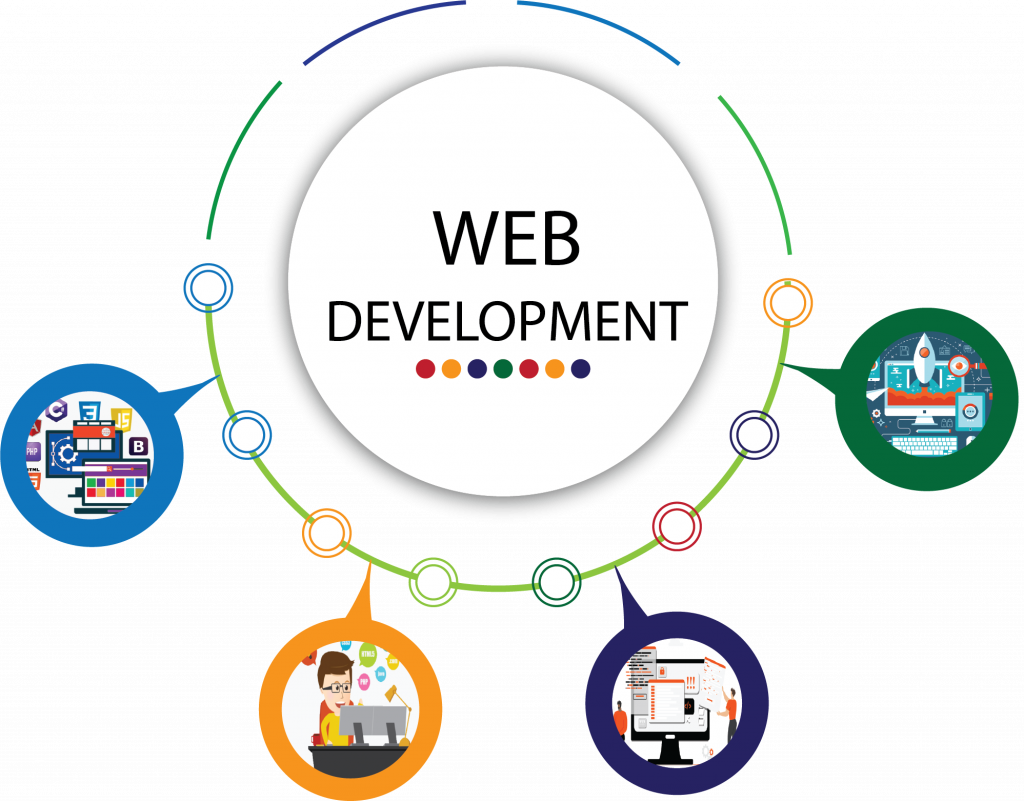Your Guide to Modern Internet Growth: Trends and Finest Practices
In the swiftly progressing landscape of web development, understanding the most recent patterns and best practices is important for developing pertinent and engaging digital experiences. Secret factors to consider such as individual experience, responsive layout, and access are not simply optional however essential to the success of modern-day applications.
Arising Technologies in Internet Development
The advancement of internet growth is marked by an unrelenting pursuit of development, driven by the wish to boost customer experience and streamline processes. Arising technologies remain to improve the landscape, offering developers effective tools to produce even more vibrant and responsive applications. Secret amongst these modern technologies are Progressive Web Applications (PWAs), which blend the most effective of web and mobile applications, supplying offline functionality and improved efficiency.
One more substantial improvement is the increase of Artificial Intelligence (AI) and Maker Learning (ML), which make it possible for customized user experiences and data-driven decision-making. These modern technologies help with chatbots, referral systems, and boosted search functionalities, therefore changing exactly how customers connect with internet applications.
Additionally, the adoption of frameworks like React, Vue.js, and Angular has actually reinvented front-end development, advertising modular design and effective state monitoring. On the backside, serverless architecture and microservices foster scalability and flexibility, enabling programmers to focus on composing code without handling facilities.
Value of User Experience
Customer experience (UX) has come to be a critical emphasis in internet growth, specifically as arising innovations improve communications. A favorable UX not only enhances individual complete satisfaction however also drives involvement, retention, and conversions. ecommerce web development perth. In a significantly competitive electronic landscape, businesses have to focus on UX to distinguish themselves and satisfy customer assumptions
Efficient UX layout is rooted in understanding user requirements and behaviors. This involves conducting thorough study, creating customer identities, and utilizing use testing to collect understandings. By doing so, programmers can develop user-friendly interfaces that promote seamless navigating and minimize friction points.
Moreover, a well-designed UX can dramatically influence a website's efficiency metrics. Studies have actually revealed that individuals are most likely to abandon a website if they come across inadequate use or excessive loading times. Alternatively, a structured, user-centric style can cause reduced bounce rates and enhanced time invested on the site.
Welcoming Receptive Layout
In today's diverse digital landscape, welcoming receptive layout is crucial for making certain optimum individual experiences across different tools. With an increasing number of users accessing web sites via smartphones, tablets, and desktop computers, a receptive design technique allows material to adapt flawlessly to various screen dimensions and alignments.
Receptive layout utilizes liquid grids, adaptable images, and CSS media questions to create a dynamic format that changes in real-time. Full Article This approach not just improves functionality yet also contributes to improved search engine rankings, as search engines favor websites that give a consistent experience across tools. In addition, receptive style minimizes the requirement for several versions of an internet site, enhancing maintenance and updates.
Additionally, receptive style promotes greater involvement by providing a customized experience, keeping customers on the site much longer and decreasing bounce rates. As customer habits remains to develop, investing in receptive style is critical for organizations intending to improve client fulfillment and drive conversions. In summary, embracing receptive design is not simply a fad; it is a basic practice that aligns with the expectations of modern customers, ensuring availability and performance no matter the tool they select to use.
Availability in Internet Development
Producing an internet site that is both receptive and easily accessible is necessary for getting to a larger audience. Availability in web advancement ensures that all users, despite their capabilities or specials needs, can properly involve with digital material. This includes individuals with visual, acoustic, cognitive, or motor problems.
To achieve accessibility, programmers should abide by the Web Web Content Access Standards (WCAG), which supply a structure for making web content much more perceivable, operable, understandable, and durable. Trick techniques include utilizing semantic HTML components, giving alternate text for pictures, ensuring adequate color contrast, and enabling keyboard navigating.
Additionally, implementing ARIA (Easily accessible Abundant Internet Applications) features can enhance ease of access, particularly for vibrant material and advanced customer interfaces. Testing with actual customers, including those with disabilities, is vital to recognize possible barriers and enhance individual experience.

The Surge of Progressive Web Applications
A considerable change in internet development has arised with the increase of Progressive Internet Applications (PWAs), which effortlessly incorporate the finest functions of mobile applications and standard sites (ecommerce web development perth). PWAs are developed to offer customers with a quickly, dependable, and engaging experience, no matter their net link. This is achieved with solution employees, which make it possible for offline capabilities and background syncing, ensuring that users can access content also in low-connectivity scenarios
PWAs likewise leverage receptive layout concepts, guaranteeing that they operate smoothly throughout a variety of gadgets and screen dimensions. This adaptability is essential in a period where customers increasingly depend on smart phones for their online tasks. PWAs get rid of the requirement for different application useful link store installations, enabling for simpler and much more easily accessible distribution.

Conclusion
Finally, contemporary internet development necessitates a complex method that encompasses arising innovations, customer experience, responsive design, accessibility, and the execution of Dynamic Internet Applications. Adhering to these trends and best practices not just improves customer engagement but also promotes inclusivity, ensuring that digital content is available to varied target markets. By prioritizing these components, developers can create impactful applications that satisfy the developing requirements of users in a significantly electronic landscape.